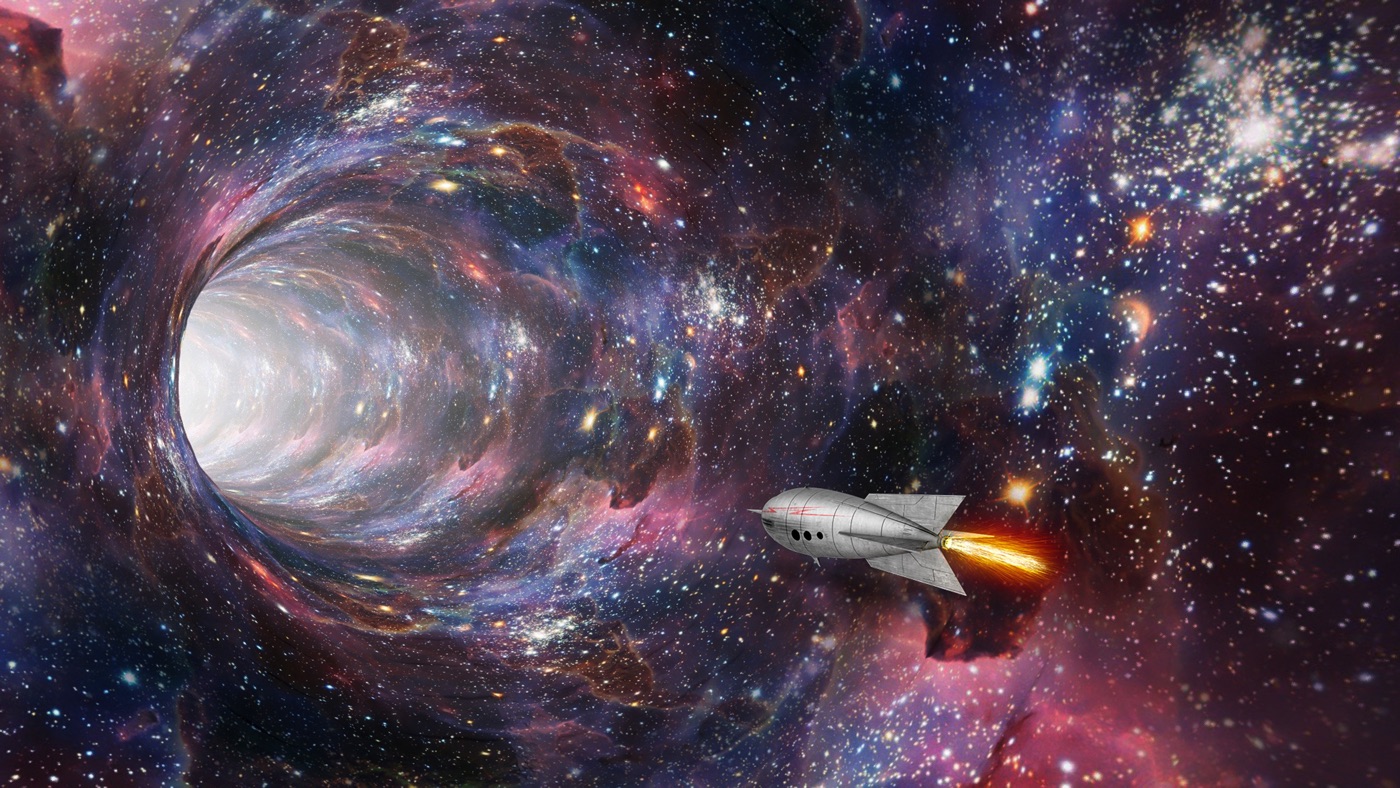THE SOUTHWORTH PLANETARIUM
207-780-4249 www.usm.maine.edu/planet
70 Falmouth Street Portland, Maine 04103
43.6667° N 70.2667° W
Altitude: 10 feet below sea level
Founded January 1970
Julian Date: 2459326.18
2020-2021: CXVII
THE DAILY ASTRONOMER
Thursday, April 22, 2021
Exploratorium XLVI: The Trouble with Wormholes
is that what they offer in speed they lack in convenience. Yes, an intrepid traveler seeking to sail to another Universe would cover unfathomable distances in record time, but he/she would do so only after being reduced to his/her component sub-atomic particles. Nothing on Earth yet invented (but, wait) is capable of such utter bodily deconstruction. As a traveler approaches a black hole, presumed to be the wormhole's entrance, he/she would initially experience no discomfort. Within a few hundred miles of the event horizon, a dark spherical region enclosing the black hole, tidal forces would exert a strong pull on the closest body parts. We'll assume these parts are the feet. Quickly,this strong pull becomes quite unpleasant and then immensely painful as the traveler is literally stretched into a long, thin strip. By this time the traveler is dead and so doesn't personally experience the subsequent stages during which the tidal pull overwhelms the electrical forces binding together the molecules and then overpowers the considerably stronger forces responsible for atomic and nuclear cohesion. The atoms and then their nuclei snap apart; the hearty astronaut becomes a subatomic flotsam swarm trapped by the gravitational hell hound that created it.
See? Inconvenient.
Science fiction writers are quite fond of wormholes for they provide their characters a rapid way to travel from point A to point gamma-alpha-omicron within two clicks of a Mok valorum's antennae. Also, being unconstrained by physical reality, they can introduce remedies such as anti tidal-force ointment to counteract any harmful effects their protagonists might experience.
Though they might seem fictional, and we have not yet collected direct evidence of their existence, wormholes are, indeed, a scientific concept conceived by two 20th century physicists. Albert Einstein (1871 - 1955) and Nathaniel Rosen (1909-1995) formulated a relativistic conduit connecting a black hole to a hypothesized "white hole," located in either a remote location within the same universe or a point in another universe altogether. This connecting passage, called the "Einstein-Rosen Bridge," arose from a solution to the field equations. This means that theoretically wormholes can exist even though thermodynamicaln law does not allow for such objects as white holes: those that deliver matter into the Universe. Simply, the amount of matter-energy in the Universe remains constant. Matter-energy doesn't vanish from the cosmos but, instead, merely changes form. Matter-spewing white holes represent a stark violation of this thermodynamical provision. Displacing them so they exist in another Universe is a handy way of circumventing this difficulty, as the laws of thermodynamics valid in our universe might not apply to another. The scientific term for this Universe jump is called "cheating."

While we cannot predict if one day a clever band of descendants will find a wormhole or even figure out a way to travel through one without being shredded, we do know that mathematical models allow wormholes to exist. Theoretical physics is curious in that it allows many things to exist that we haven't yet discovered. And, it is true that we haven't actually directly discovered black holes, even though we are quite certain they lurk all over the galaxy. We don't even have indirect evidence to support the existence of white holes or of the Einstein Rosen Bridge that allegedly connects them to black holes.
They presently exist only in theory; and that's also bound to prove troublesome.
*Using the word "discovery" in this context is quite a stretch as we haven't yet found any evidence of such wormholes. It remains a theoretical possibility.
**The famous ancient geometrician Euclid is a bit mysterious. Little is known about his personal life, including details such as birth years. 300 BCE is the approximate time period of his life. To assign a time range of his life is to assume beyond our knowledge.
***We have discovered x-ray sources in orbit around stars. We believe these to be accretion disks formed when a black hole strips matter from a companion star. This material revolves around the black hole at various speeds (the inner material moving faster than the outer matter). This differential rotation heats the gases so fiercely they emit high-energy x-rays. So, we've found indirect evidence of black holes.
To subscribe or unsubscribe from the Daily Astronomer:

